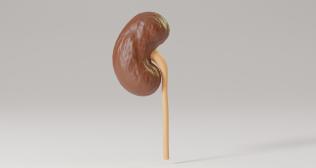
Hyperuricemia: Health Impact and Treatment Options
Our bodies are constantly engaged in complex metabolic processes, breaking down substances and creating byproducts that are then filtered and removed. One such byproduct is uric acid, a natural waste product that, in healthy amounts, causes no issues. However, when the levels of this compound in the blood become too high, it leads to a condition known as hyperuricemia. This common metabolic issue can remain silent for years, but it can also set the stage for painful and debilitating health problems like gout and kidney stones.
Maintaining a healthy balance of uric acid is more important than many people realize. Recognizing the signs of an imbalance and understanding the available treatment options are key to preventing long-term complications and preserving your health.
What Is Uric Acid and Hyperuricemia?
Uric acid is produced when the body breaks down purines. Purines are natural substances found in all of our body's cells and in many of the foods we eat, particularly red meat, organ meats, and certain types of seafood. Normally, the body dissolves uric acid in the blood, passes it through the kidneys, and excretes it in the urine.
Hyperuricemia occurs when this system is out of balance. This can happen for two main reasons: either your body is producing too much uric acid, or your kidneys are not excreting enough of it. When the concentration of uric acid in the blood becomes too high, it can crystallize. These tiny, needle-like urate crystals can then deposit in your joints or tissues, leading to inflammation and pain.
Recognizing High Uric Acid Symptoms
A significant number of people with hyperuricemia are asymptomatic, meaning they have high levels of uric acid in their blood but experience no ill effects. For these individuals, the condition is often only discovered through a routine blood test. However, when the crystal deposits become significant, they can trigger a range of painful symptoms. The symptoms of increased uric acid are not caused by the acid itself, but by the body's inflammatory response to the crystals it forms.
The most well-known high uric acid symptoms are associated with gout:
- Sudden and Severe Joint Pain: This is the classic sign of a gout attack. The pain is often excruciating and can develop rapidly, frequently starting during the night. The joint of the big toe is the most commonly affected site, but gout can also occur in the ankles, knees, wrists, and elbows.
- Inflammation and Redness: The affected joint becomes swollen, tender, and red. The skin may appear shiny and stretched.
- Intense Warmth: The inflammation generates significant heat. Many people describe one of the key internal body heat symptoms as a feeling of the joint being "on fire." This sensation of warmth is a hallmark of an acute gout attack.
Beyond gout, other high uric acid symptoms include:
- Kidney Stones: Urate crystals can clump together in the kidneys to form stones. This can cause severe pain in the side and back, pain that radiates to the lower abdomen and groin, blood in the urine, and a persistent need to urinate.
- Tophi: In cases of chronic, long-term hyperuricemia, urate crystals can form hard, chalky lumps called tophi under the skin. These are most commonly found on the joints, fingers, elbows, and ears.
Uric Acid Normal Range and Diagnosis
Diagnosing hyperuricemia is straightforward and is done through a simple blood test that measures the level of uric acid in your serum. Your doctor may also recommend a 24-hour urine collection to see if you are under-excreting or overproducing uric acid.
The uric acid normal range can vary slightly between laboratories, but it is generally considered to be:
- For women: 2.4 to 6.0 mg/dL
- For men: 3.4 to 7.0 mg/dL
Levels above 7.0 mg/dL are typically considered high and are diagnosed as hyperuricemia.
Treatment and Management of High Uric Acid
Treatment for hyperuricemia is focused on two goals: managing the pain of acute attacks (like gout) and implementing long-term strategies to lower uric acid levels and prevent future complications.
1. Lifestyle and Dietary Modifications
This is the cornerstone of managing high uric acid.
- Dietary Changes: The most effective change is to limit your intake of high-purine foods. This includes red meat (like beef and lamb), organ meats (liver, kidneys), and certain seafood (sardines, anchovies, mussels).
- Avoid Sugary Drinks and Alcohol: Fructose, especially from high-fructose corn syrup in sugary drinks, is known to raise uric acid levels. Alcohol, particularly beer, is also a major contributor.
- Stay Hydrated: Drinking plenty of water helps your kidneys function more efficiently and flush uric acid out of your system.
- Maintain a Healthy Weight: Obesity is a major risk factor for hyperuricemia. Losing weight through a balanced diet and regular exercise can significantly lower your levels.
2. Medications
For many people, lifestyle changes alone are not enough to get their uric acid into the normal range.
- For Acute Gout Attacks: Medications like nonsteroidal anti-inflammatory drugs (NSAIDs), colchicine, and corticosteroids are used to quickly reduce the pain and inflammation.
- For Long-Term Prevention: Your doctor may prescribe medications to lower your uric acid levels. These drugs work in one of two ways: they either reduce your body's production of uric acid (e.g., allopurinol, febuxostat) or they help your kidneys excrete more uric acid (e.g., probenecid).
A Proactive Approach to Your Health
Hyperuricemia is a common but manageable condition. Left unchecked, high levels of uric acid can lead to painful gout, kidney stones, and long-term joint damage. Understand the causes, recognize the symptoms, and work with your doctor on a management plan. Include lifestyle changes and, if needed, medication to control your levels and protect your long-term health.
Frequently Asked Questions
1. What foods should I completely avoid if I have high uric acid?
Ans. You should primarily avoid organ meats, certain seafood like anchovies and sardines, and high-fructose corn syrup found in many processed foods and sugary drinks. Beer is also a major trigger.
2. Can stress cause high uric acid levels?
Ans. While stress is not a direct cause, it can contribute to lifestyle habits (like poor diet) that can raise uric acid. Some studies suggest a link, but more research is needed.
3. Is it dangerous to have high uric acid if I don't have any symptoms?
Ans. Even without symptoms, long-term hyperuricemia can still potentially lead to kidney damage over time. Your doctor will help you decide if treatment is necessary based on your levels and other health factors.
4. Does drinking coffee affect uric acid?
Ans. Some studies suggest that drinking coffee in moderation may be associated with lower uric acid levels and a reduced risk of gout, but it should not be considered a treatment.
5. How long does it take to lower uric acid with diet?
Ans. With strict dietary changes and increased hydration, you may see a noticeable drop in your uric acid levels within a few weeks to a couple of months.



















